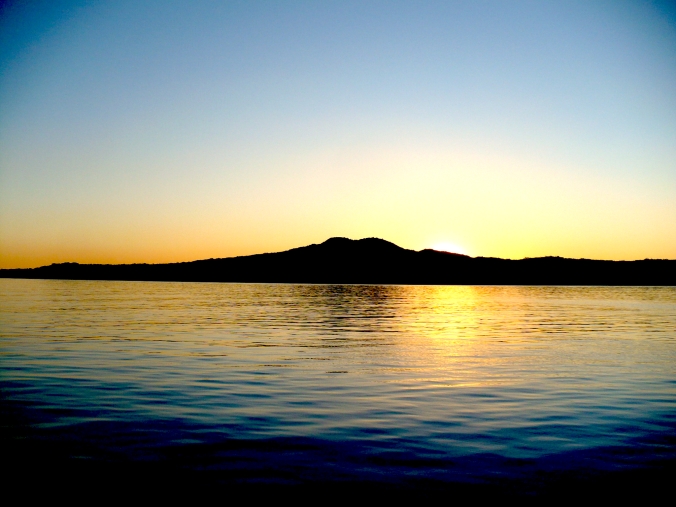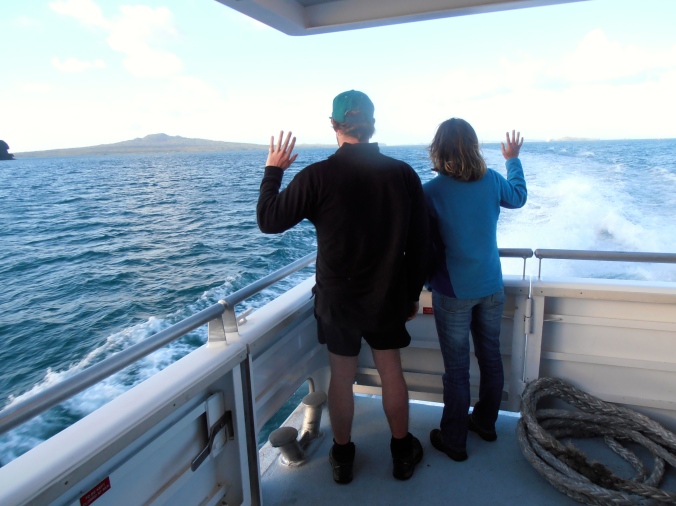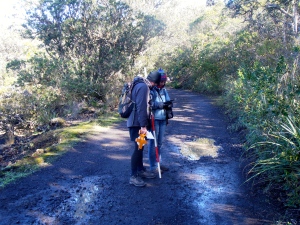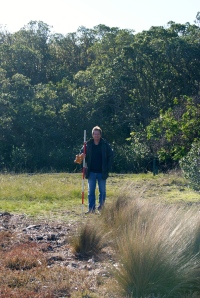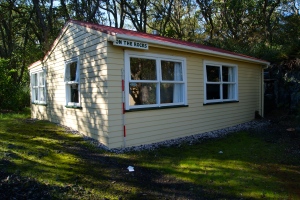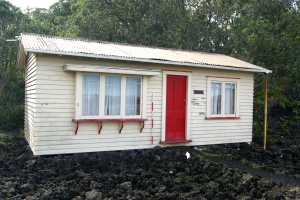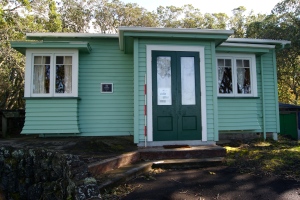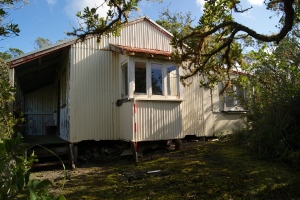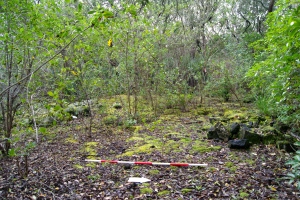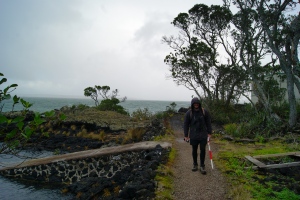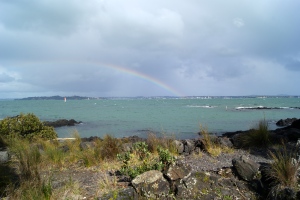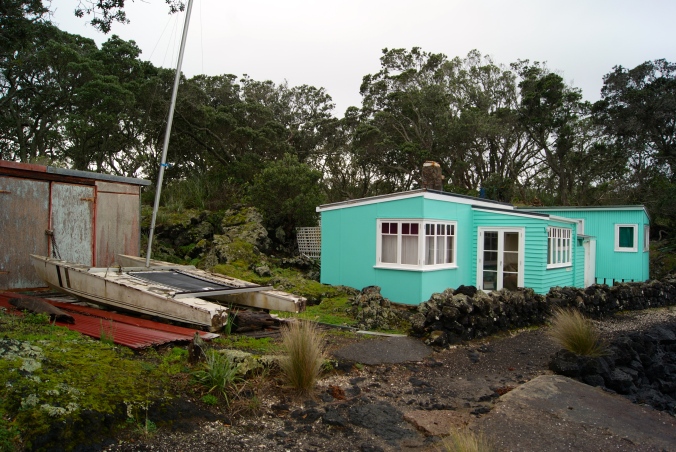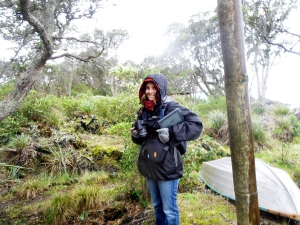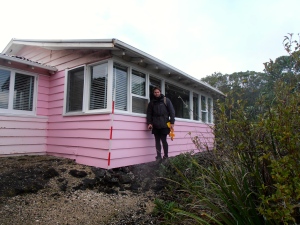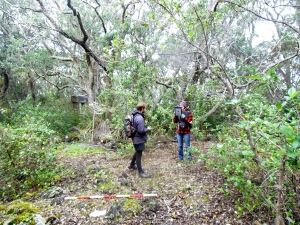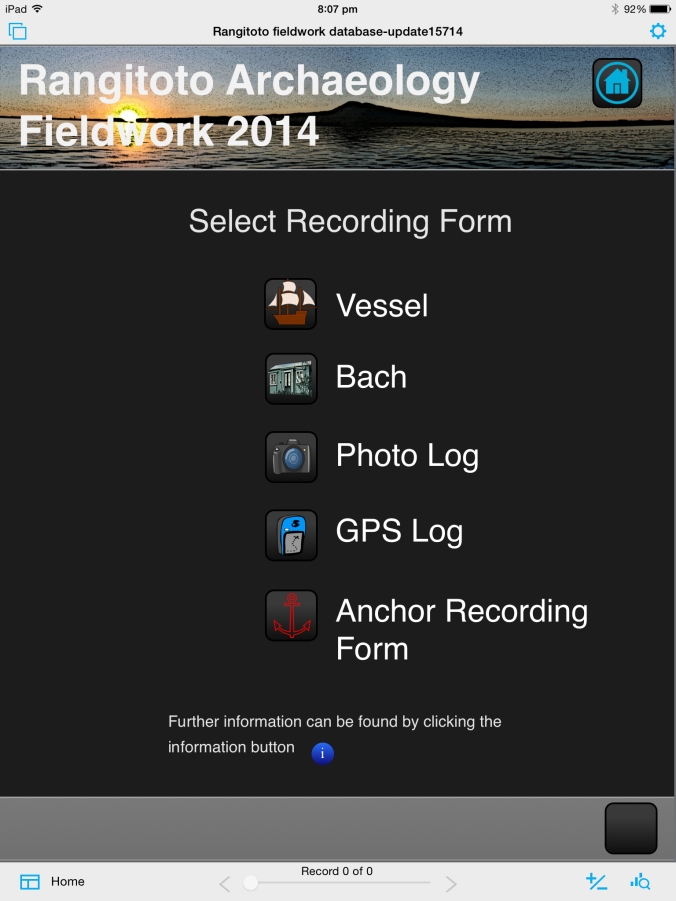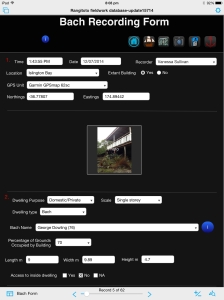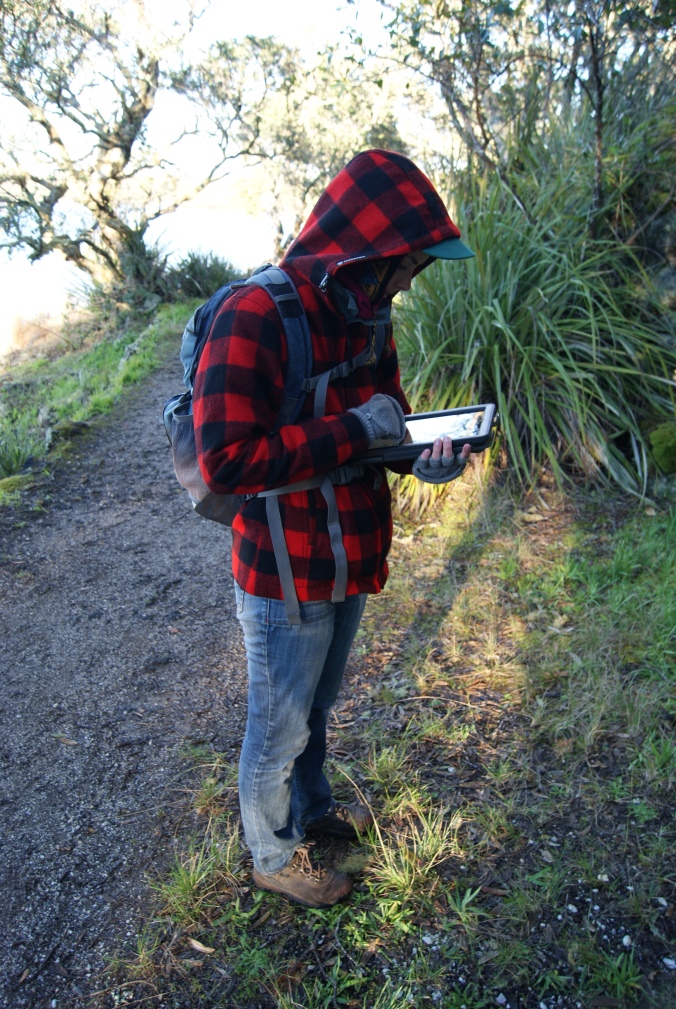With fieldwork now finished this is the last piece of the pie. We hope that you have enjoyed the blog and thank you for all of the support. The video documents our time on the island and the work that was carried out—enjoy! /KB
Fieldwork
Zoom behind the scenes
Preliminary results and a big thank you!
With fieldwork now complete, I am able to release some preliminary results from our surveys. After spending 55 hours on Rangitoto Island spread over 12 field days and 97km of walking, we managed to record 11 abandoned vessel sites and 101 bach sites. The abandoned vessels at Boulder Bay/Wreck Bay had limited signs of salvage activities. Bolt deposits, a fire pit and saw marks in timber were all recorded as possible acts of salvage. In terms of the reuse of ship material, all three bach communities (Beacon End, Rangitoto Wharf and Islington Bay) were found to have definite ship material and other possible ship material. The possible ship material is linked to unidentifiable pieces of timber with fasteners found at the bach sites. Other recorded material included possible ships doors and water tanks.
In conclusion the Rangitoto Island ships’ graveyard displays acts of salvage and the baches display reuse of salvaged ship material. Through archaeology the link between the communities and Boulder Bay is not conclusive, however, with the addition of archival research and oral history interviews, it suggests there is a link between the bach sites and abandoned vessels.
Of course these results could not have been achieved without the help and support of everyone who has been involved.
Special thanks to
- The research team for volunteering their time, knowledge and equipment
- Oral history participants (bach owners/families) for sharing their time and memories
- The bach owners who provided access to view the inside of their baches
- Rangitoto Island Historic Conservation Trust
- Rangitoto Island Bach Community Association
- Department of Conservation, Historic Heritage Branch
- Auckland Council
- Fullers staff
- Birkenhead Library
- Maritime Archaeological Association of New Zealand
- Voyager Maritime Museum archives
- Auckland War Memorial Museum
- Flinders University
and thank you to all the people who have followed and commented on the blog. We hope this blog has been informative and engaging for you. The final video documenting our work will be posted in the next few days. /KB
In perspective
The day is here—we finished our surveys on Rangitoto Island! We recorded our last two bach sites at Rangitoto Wharf by 11:00 and found no vessel material. We then made our way up to the summit to take photos back to each of the communities and Boulder Bay. Along with compass bearings, the photos put in perspective where the communities and vessels are located in relation to the summit. The day was also a stunner, so it gave us workers a well earned 360 degree view of the wider Auckland area. It was a refreshing change from dense bush and coastline, although you can’t really complain either way.
After the summit, we made our way to Wreck Bay to take some more measurements of Columbia‘s timber frames. This data will be used to determine if the timbers found at the bach sites are likely to have come from the Wreck Bay.
The surveys have been completed and it is with sadness we say goodbye to Rangitoto Island, although I think our legs are looking forward to a break! There is still a lot of work to be done and over the coming months the results will be compiled with the final thesis submitted in December. /KB
The penultimate day…
Today was most likely our second to last day on Rangitoto. We returned to Rangitoto Wharf where we recorded another 11 extant and demolished baches.
We also fixed a GPS position on several of the public buildings at the wharf, like the store, honey house, changing rooms, telephone and swimming pool. We were lucky in meeting a couple of bach owners who are staying in their bach at the moment, who were very welcoming and allowed us to view the interior of the bach.
Vessel material located was two possible ships tanks. After getting a lift both ways today, from Islington Bay and Rangitoto Wharf, we are now in a good position to complete the archaeological surveys tomorrow. /MF
On the coast, up the hill, some are here, some are gone
Today, we returned back to Rangitoto Wharf and continued on from yesterday. The surveyed bach sites ranged from existing dwellings to demolished sites and were located along the coastal track and tucked amongst the trees inland. Once neatly manicured tracks are now heavily disguised with overgrown vegetation. After bashing your way through the bush, a clearing where a building once stood proud, can be seen.
When looking for a demolished bach site, you need to look for a large clearing amongst the trees, usually flat and a stone lined pathway leading to the site. Once at the site you can expect to find cultural remains, such as, water tanks, outhouses (long drops), concrete foundations, corrugated iron, fibrolite (asbestos-cement sheeting), ceramics, window glass and a bottle dump. We may think the baches no longer remain but cultural features still remind us of a holiday retreat. As for archaeology, so much could be learned about the behaviour of bach residents, but this will have to be sidelined for a future project! /KB
What to bring?
Archaeology survey’s require different pieces of equipment and not just an iPad. Each day, in addition to the iPad, we carry:
- 3 tape measures (1m, 5m and 50m)
- 3 cameras
- 2 GPS units/compass
- Spare batteries (AA)
- Compass
- Range pole/photographic scale (1.75m)
- 4 Scale cards (8cm)
- A north arrow
- A notebook
- Pens and pencils
This is spread over 2 bags with lunch and personal (warm/waterproof) clothes. If you are traveling to a remote location, always take extra as you never know when you might need it! /KB
Rangitoto Wharf
Today was the first day of recording baches at the Rangitoto Wharf bach community.
This group of baches is located on the southern side of the island and is the largest of the three, slightly larger than Islington Bay.
This is usually the central hub for ferries and tourists however the wharf is being rebuilt which is why we are taking the ferry to Islington Bay for fieldwork. Starting at the western end of the community, we worked our way back to the east, towards Islington Bay, and recorded 13 baches.
We were also lucky to get a lift back to the ferry, saving an hour-long walk. Tomorrow, we will be returning to where we left off today. /MF
Two weeks in one day: Official trailer
A teaser of what’s to come in our short film ‘Two weeks in one day’, highlighting fieldwork on Rangitoto. /KB
How we record 140 baches and 11 vessel sites using an iPad
Up until now, the blog has documented our finds in the field, but our recording methods have not been discussed. This blog post will introduce you to the way we are recording our sites on Rangitoto Island and considerations to look out for when using technology in the field.
Traditionally pieces of paper would be carried into the field and used to record artefacts, features, photos, anchors and GPS (Global Positioning System) points. For this field work, it was decided with the advancements and access to technology, that it was time to digitise the old paper recording forms. In doing so, it has allowed the recording forms to be stored in one place and no longer prone to wet and mushy paper when it is raining.
Filemaker Pro was used as the database software. The software allows you to develop an app like program that is user-friendly for whoever is in control. The database was created so it was easy to use on an iPad. While creating the database, time must be taken to insert all values and fields as you can’t do this when you are in the field. A value means the options that are available to choose from and a field is the name in which the values are assigned to. For example you might have the field ‘Location’ and the values assigned would be ‘Islington Bay’, ‘Rangitoto Wharf’ and ‘Beacon End’. By having prescribed values, you as a researcher have the ability to standardise and control input options in the field. This control is important as it limits the error that can be inputted into the fields. Errors on forms can range from different spellings to lack of consistency between answers. This may not sound like a big deal, but when it comes to data processing at night, it is a huge advantage to have. We’ve found that we no longer have to stay up to the early hours of the morning data processing that days information.
So how are we recording the bach and vessel sites using the iPad? The bach and vessel sites are recorded using prescribed fields and values. These include, name of recorder, date/time, location, GPS, photo, length x width, vessel material, type of vessel material and the list goes on. One person is in control of the iPad while the other takes the GPS points, notes of the site, setting up the scale for photos and scouring the site for vessel remains. Recording the vessels is slightly different in the sense that we look for evidence of salvage rather than re-use of vessel material.
The downside of technology in the field is the reliance on a digital copy of your information. Paper copies are physical and can be entered into a database. This way you retain two different copies of information. By using the iPad, you rely on having one copy. In the unlikely event of the database crashing, you can be sure your information will be lost. The only way to combat this at this stage, is to back up your database every night when you return from the field. This way you will most likely lose your days work and not the whole week. The other limitation is the reliance on power and the iPad can only hold its charge for so long. Luckily we return from the field every day to charge our electronics for the next day. But if you are planning on staying in a remote location for a long period of time, consider taking booster power packs or solar chargers. The other consideration for technology in the field is that water and electricity do not mix. For iPads, however, there are many aftermarket weather proof housings that can be used to protect your iPad from the rain, snow, wind and aid as a shock absorber when dropped. This project has employed a Lifeproof case (more can be found here http://www.lifeproof.com/en/) and so far has lived up to its expectations. The case has allowed us to work in all weather conditions and so far only ferry cancellations has hampered our survey work.
The benefit of using technology is the ability to control the information collected and entered into the database and to keep it consistent. Technology also allows for quicker data upload and extraction. This means time can be spent on other priorities for the field project.
Hopefully this has provided some info about the way we are recording the sites and if you wish to ask for more information feel free to comment or use the contact page. /KB
